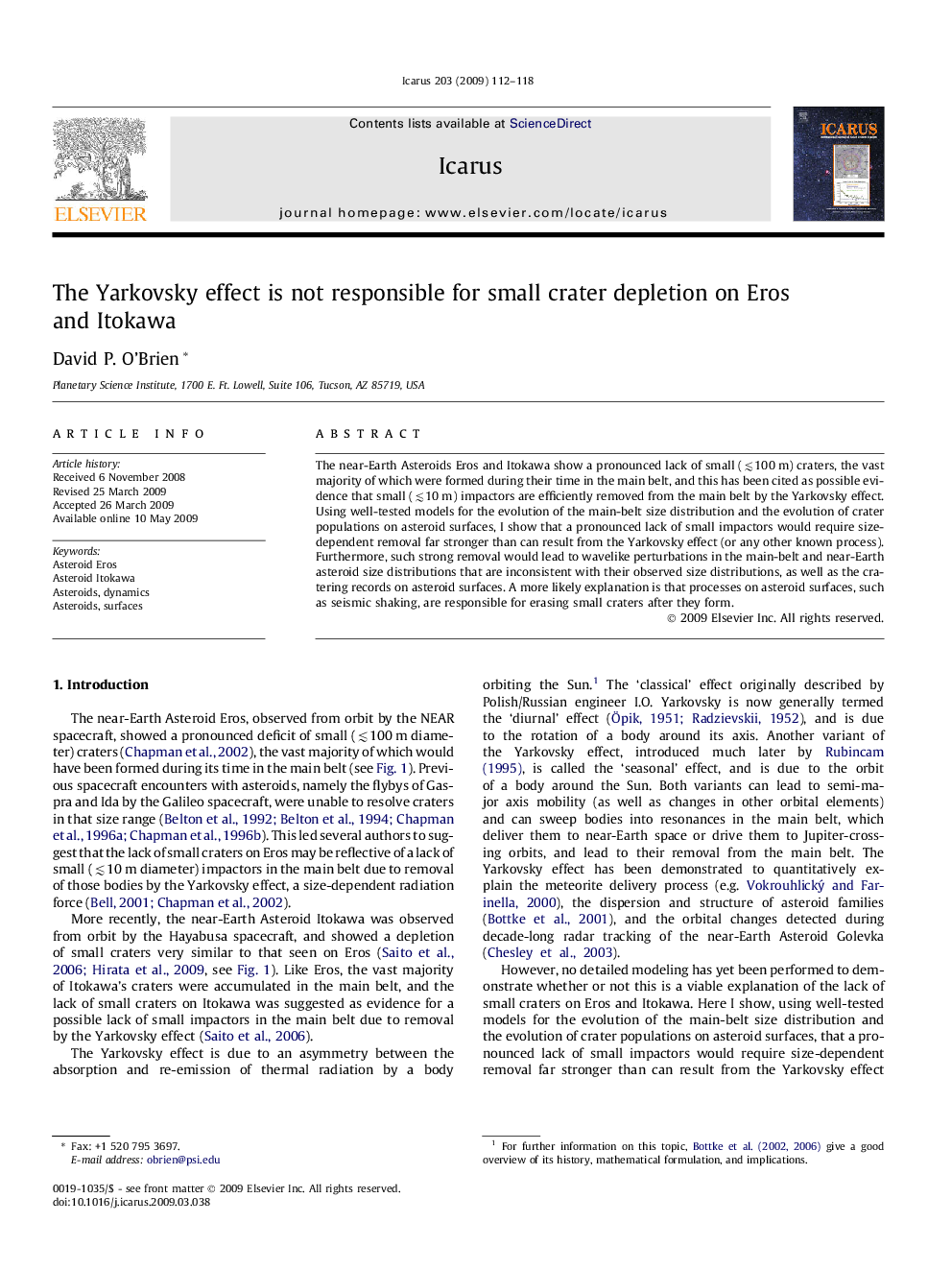| Article ID | Journal | Published Year | Pages | File Type |
|---|---|---|---|---|
| 1774549 | Icarus | 2009 | 7 Pages |
The near-Earth Asteroids Eros and Itokawa show a pronounced lack of small (≲100 m) craters, the vast majority of which were formed during their time in the main belt, and this has been cited as possible evidence that small (≲10 m) impactors are efficiently removed from the main belt by the Yarkovsky effect. Using well-tested models for the evolution of the main-belt size distribution and the evolution of crater populations on asteroid surfaces, I show that a pronounced lack of small impactors would require size-dependent removal far stronger than can result from the Yarkovsky effect (or any other known process). Furthermore, such strong removal would lead to wavelike perturbations in the main-belt and near-Earth asteroid size distributions that are inconsistent with their observed size distributions, as well as the cratering records on asteroid surfaces. A more likely explanation is that processes on asteroid surfaces, such as seismic shaking, are responsible for erasing small craters after they form.
